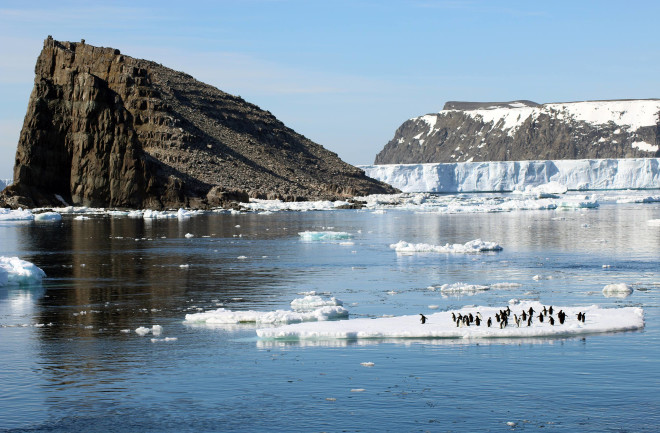Discovering a giant animal colony is a big deal. Discovering two, just miles apart, is crazy. But that’s what scientists found off the Antarctic Peninsula.
In Scientific Reports in March, researchers announced the discovery of two new Adélie penguin colonies on the Danger Islands, a 22-mile-long archipelago on the northeast tip of the peninsula, which juts toward Chile. Only two other penguin colonies in the world are larger. Altogether, they counted 1.5 million birds on the islands, more than doubling the region’s population.
The islands, surrounded by waters rich in krill (the penguins’ main food source), have long been known as a popular penguin hangout. But the size of both populations, spotted and then counted using satellite imagery and drones, was unexpected, says Heather Lynch, an ecologist at Stony Brook University and senior author of the paper.
The marine birds aren’t faring so well on the peninsula’s west side, however: The population there has dropped by 70 percent over the last few decades.
Scientists suspect climate change is behind the decrease. Sea ice, crucial to krill habitat, is diminishing, while an uptick in air temperature has brought a lot of rain along the west coast. “Rainstorms flood the nests and can freeze the chicks,” says Lynch.
The penguin decline in the west has made the Danger Islands populations in the east all the more significant. The islands had not been considered for environmental protection, says Lynch, but thanks to her team’s documentation of their robust penguin colonies, the area is now being considered for safeguarding.
“Where climate change has not had major impact yet, we still have biodiversity thriving,” says Lynch. “We still have these amazing, awe-inspiring animals.”

